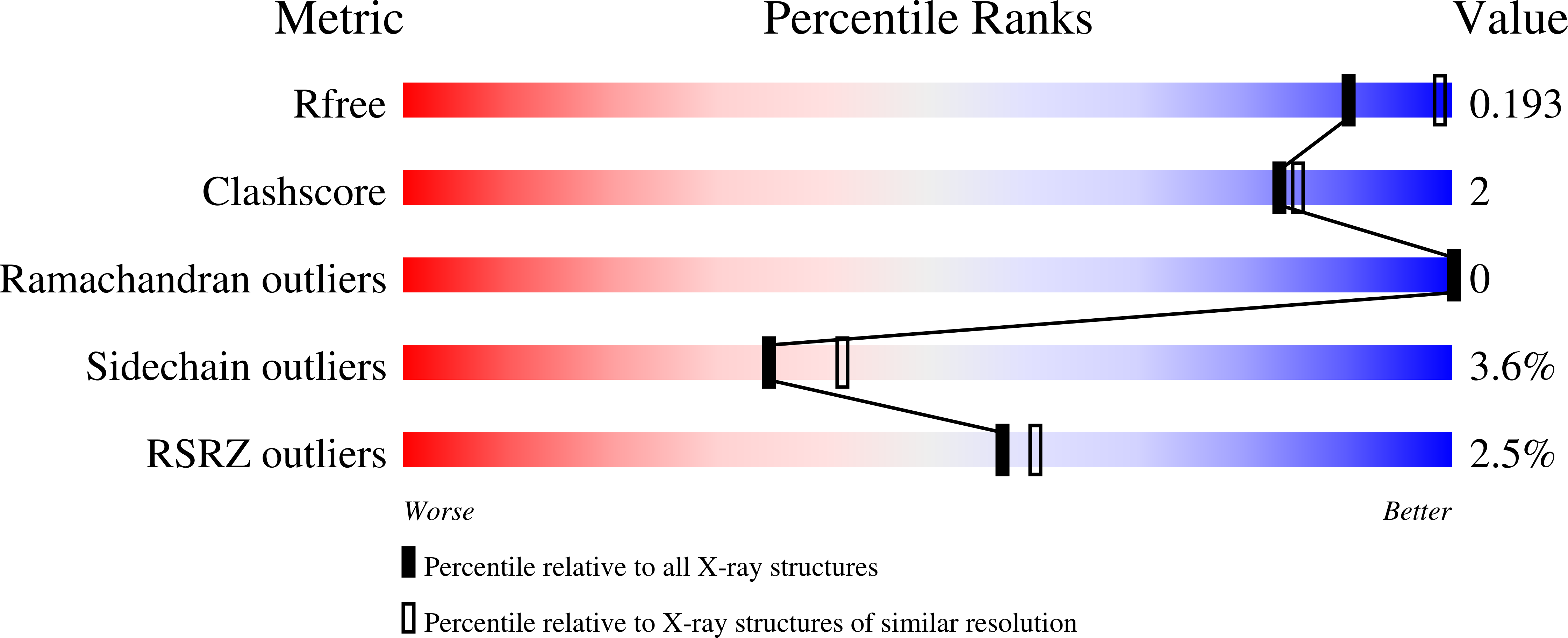Structural studies of [beta]-carbonic anhydrase from the green alga Coccomyxa: inhibitor complexes with anions and acetazolamide.
Huang, S., Hainzl, T., Grundstrom, C., Forsman, C., Samuelsson, G., Sauer-Eriksson, A.E.(2011) PLoS One 6: e28458-e28458
- PubMed: 22162771
- DOI: https://doi.org/10.1371/journal.pone.0028458
- Primary Citation of Related Structures:
3UCJ, 3UCK, 3UCM, 3UCN, 3UCO - PubMed Abstract:
The β-class carbonic anhydrases (β-CAs) are widely distributed among lower eukaryotes, prokaryotes, archaea, and plants. Like all CAs, the β-enzymes catalyze an important physiological reaction, namely the interconversion between carbon dioxide and bicarbonate. In plants the enzyme plays an important role in carbon fixation and metabolism. To further explore the structure-function relationship of β-CA, we have determined the crystal structures of the photoautotroph unicellular green alga Coccomyxa β-CA in complex with five different inhibitors: acetazolamide, thiocyanate, azide, iodide, and phosphate ions. The tetrameric Coccomyxa β-CA structure is similar to other β-CAs but it has a 15 amino acid extension in the C-terminal end, which stabilizes the tetramer by strengthening the interface. Four of the five inhibitors bind in a manner similar to what is found in complexes with α-type CAs. Iodide ions, however, make contact to the zinc ion via a zinc-bound water molecule or hydroxide ion--a type of binding mode not previously observed in any CA. Binding of inhibitors to Coccomyxa β-CA is mediated by side-chain movements of the conserved residue Tyr-88, extending the width of the active site cavity with 1.5-1.8 Å. Structural analysis and comparisons with other α- and β-class members suggest a catalytic mechanism in which the movements of Tyr-88 are important for the CO(2)-HCO(3)(-) interconversion, whereas a structurally conserved water molecule that bridges residues Tyr-88 and Gln-38, seems important for proton transfer, linking water molecules from the zinc-bound water to His-92 and buffer molecules.
Organizational Affiliation:
Department of Chemistry, Umeå University, Umeå, Sweden.

















